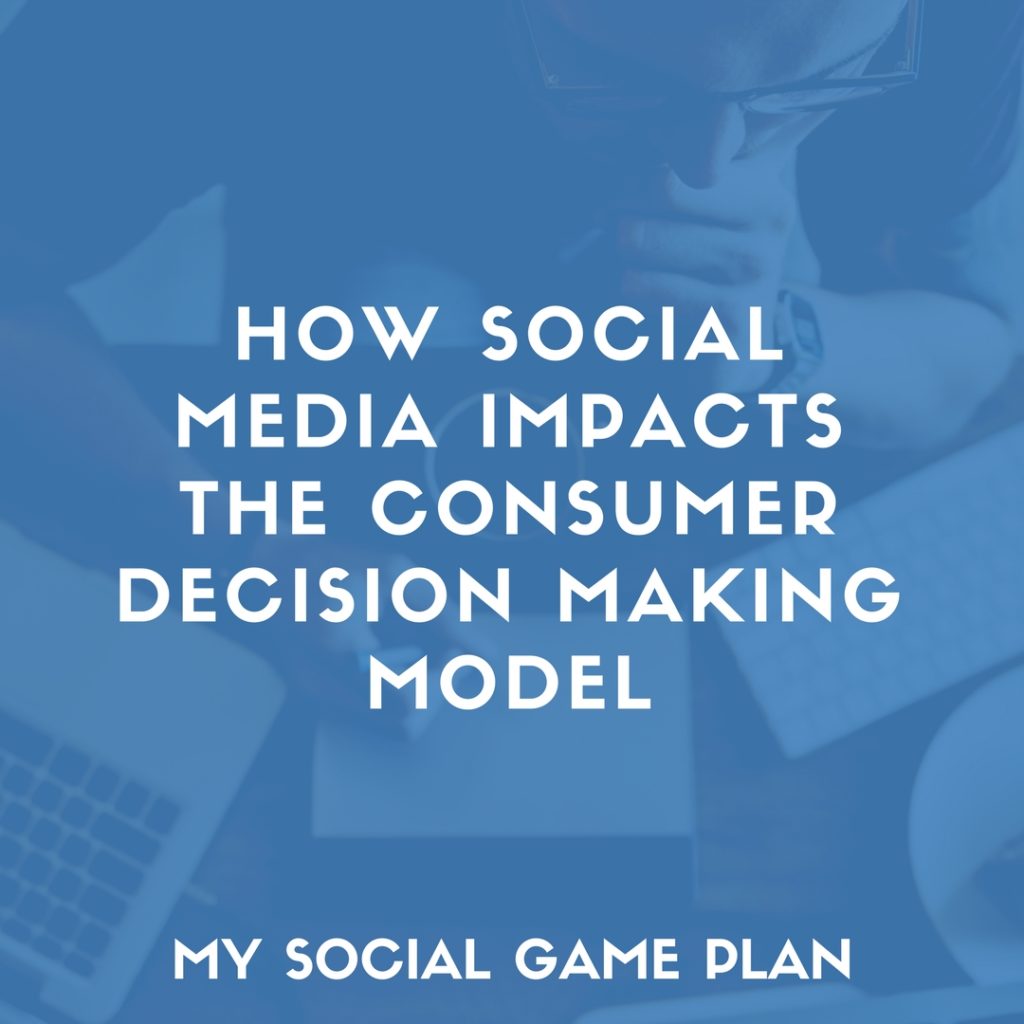“You don’t have to buy from anyone. You don’t have to work at any particular job. You don’t have to participate in any given relationship. You can choose.” – Harry Browne
Anyone who has taken a formal marketing course knows all too well the traditional consumer decision making model depicted below.
Here’s how it works…
- Consumers recognize a void between their desired and actual states (problem awareness)
- Seek information on products that will fill that void (information search)
- Form a consideration set of products they believe will solve the problem (evaluation of alternatives)
- Make a decision/purchase from that pool of alternatives (purchase)
- Evaluate the purchase and determine if it truly solved their problem or if there is still cognitive dissonance present (post-purchase evaluation)
The steps of this model haven’t changed since the introduction of social media, but what has changed are the ways consumers seek information, form their consideration sets, and give feedback about those products after purchasing.
Marketing is no longer strictly between the brand and the consumer; it’s now between the brand, the consumer, and hundreds or thousands of the consumer’s friends and followers.
All with a few keystrokes and a click of the mouse, or tap of the phone.
It would be a gross understatement to say social media is a game-changer with respect to consumer behavior.
MORE: Get three practical lessons about creating a winning social media strategy for your business. Join here.
While social media impacts all levels of the consumer decision model, there are two parts in particular that it disproportionately affects:
- Information Search
- Post-Purchase Evaluation
The Relationship Between the Information Search and Social Media
According to the 2012 Digital Influence Index study conducted by Fleishman-Hillard International Communications and Harris Interactive:
- Nearly half of those surveyed (42 percent) currently follow or friend a brand on a social networking site. While the reasons vary widely by country, the overall greatest motivation: to learn more about the brand (79 percent). [Tweet This]
- Nearly one in five individuals now looks to Facebook to obtain information about a brand or product. [Tweet This]
So, close to 20% of people turn to Facebook seeking information about a brand or product.
And that’s in 2012, a time when brands were just starting to get deeply involved with social media and the platforms were still maturing.
Improving the Information-Seeking Process Using Social Media
- Consider adding a Frequently Asked Questions (FAQs) app on your Facebook page to handle the most common concerns of your target market.
- Make sure your About pages across all social media accounts are consistent and packed with relevant information the consumer would need.
- Complete your LinkedIn company page, including full product descriptions, video demonstrations, and so on.
- Use YouTube videos to demonstrate your most sought-after or new products, showcase your business with a “company video tour,” and interview employees to give consumers a better idea of your company culture and brand.
- Occasionally make Facebook updates that target those people who are coming to your page looking for product or company information. Open the floor and encourage questions from your fans, have a monthly “Featured Product” full of product information…you get the picture.
What is Meant by Post-Purchase Evaluation
As consumers, we like to confirm our purchases are good ones. After making a purchase, we often seek feedback from friends and family, we seek positive reviews on the Internet, and we start noticing other people who have the product (you never realize how many people drive a certain car until you’ve bought that brand/model yourself).
How Social Media Impacts Post-Purchase Evaluation
In my honest opinion, this is one of the most important areas of marketing where social media can have a giant positive impact. There are many reasons for businesses to have a social media presence, but one of the primary purposes is to build an interactive, welcoming community of loyal brand enthusiasts.
Every time new customers make their way to your Facebook or Twitter pages to confirm they made a good purchase, they’ll immediately see people who are enthusiastic about the brand. They’ll be welcomed into a group of people who likely share common buying habits and interests.
The more people they witness being positive about the product or brand, the more likely they are to feel good about their purchase.
Finally, the “Holy Grail” of marketing: they’re more likely to repeat purchases if their first experience was positive and they feel like their purchase placed them in a close-knit community.
What Do You Think?
Do you agree that social media is greatly affecting decisions consumers make about products? In what specific ways do you think social media has changed the game regarding consumer decisions?
